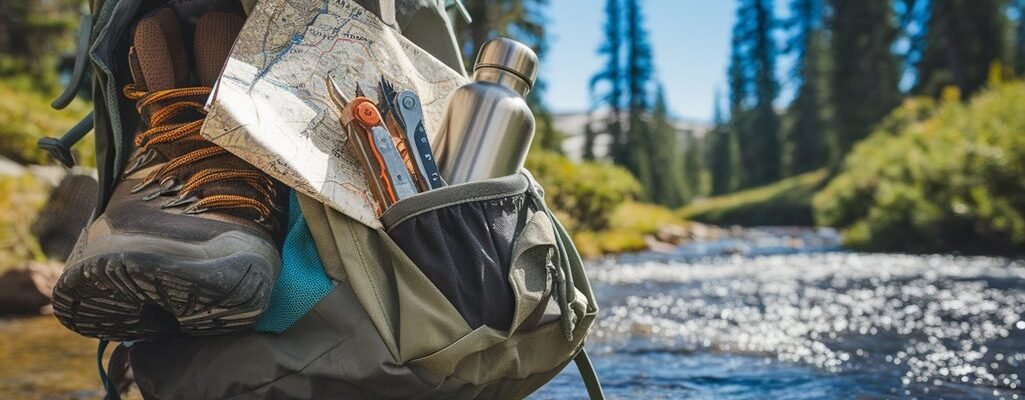
Must-Have Gear for Your Next Independent Adventure
When you set out on an independent adventure, the gear you choose can make all the difference between a smooth journey and unexpected challenges. You’ll want to be prepared with reliable navigation tools, appropriate clothing for changing weather, and safety equipment that covers emergencies. But what exactly should you prioritize, and how can you pack efficiently without overloading yourself? Let’s explore the essentials that will keep you ready for whatever comes your way.
Essential Navigation Tools for Solo Travelers
When you set out on a solo adventure, having reliable navigation tools is crucial to stay on track and safe.
First, grab a detailed physical map of your area; it doesn’t rely on batteries or signal. Pair it with a compass and learn how to use both confidently before you leave.
A GPS device is a smart backup, offering precise location info even when your phone’s signal fades. However, don’t depend solely on it—batteries can die.
Download offline maps on your smartphone to access routes without internet access.
Lastly, consider a personal locator beacon or satellite messenger for emergencies. These tools ensure you can call for help if you get lost or injured, giving you peace of mind while exploring solo.
Clothing and Footwear for Variable Conditions
Because weather can change rapidly during your adventure, choosing the right clothing and footwear is essential to stay comfortable and protected.
Start with moisture-wicking base layers that keep sweat away from your skin. Add insulating mid-layers like fleece or down for warmth, and top it off with a waterproof, breathable shell to shield against rain and wind.
Pick versatile, durable pants that dry quickly and offer freedom of movement. For footwear, invest in sturdy, waterproof hiking boots with good ankle support and grippy soles to handle slippery or uneven terrain. Don’t forget moisture-wicking socks to prevent blisters.
Layering lets you adjust to temperature shifts without overheating. This strategy ensures you stay dry, warm, and mobile, no matter what conditions you face on your independent adventure.
Safety and Emergency Equipment
A few key safety and emergency items can make all the difference when you’re venturing off the beaten path. Start with a reliable first aid kit tailored to your trip’s risks—include bandages, antiseptic, pain relievers, and any personal medications.
Carry a multi-tool or knife; it’s invaluable for quick fixes or unexpected needs. A whistle and a compact mirror help you signal rescuers if you get lost.
Don’t forget a headlamp or flashlight with extra batteries for visibility in the dark. Pack a fire starter kit, like waterproof matches or a lighter, to keep warm or signal for help.
Lastly, bring a fully charged personal locator beacon or satellite messenger—it’s your lifeline when cell service fails, ensuring help can find you fast.
Food and Hydration Solutions
Although carrying enough food and water can feel like a challenge, choosing the right supplies keeps you energized and hydrated throughout your adventure.
Bring lightweight, nutrient-dense snacks like trail mix, energy bars, and dried fruits—they provide quick fuel without weighing you down. For meals, consider dehydrated or freeze-dried options that just need boiling water.
Don’t forget a reliable water filtration system or purification tablets to refill safely from natural sources. Carry a durable, reusable water bottle or hydration bladder for easy access on the move.
Plan your intake to match your activity level and climate, sipping consistently rather than chugging at once. By prepping smart food and hydration solutions, you’ll maintain stamina and enjoy every moment of your independent adventure.
Packing and Organization Tips for Independent Adventures
When you pack smart and stay organized, your adventure becomes smoother and more enjoyable.
Start by choosing lightweight, multi-purpose gear to save space and reduce weight. Use packing cubes or compression bags to keep your items neatly separated and easy to find.
Prioritize essentials by creating a checklist, so you don’t forget critical gear. Roll clothes to minimize wrinkles and maximize space.
Place frequently used items near the top or in external pockets for quick access. Keep electronics and important documents in waterproof pouches to protect them from the elements.
Finally, weigh your packed bag to avoid surprises and adjust as needed. Staying organized not only simplifies your trip but also lets you focus on the adventure ahead without unnecessary hassle.
Conclusion
With the right gear, your independent adventure will be safer and more enjoyable. Make sure you’ve got reliable navigation tools, weather-appropriate clothing, and sturdy footwear to stay comfortable and on track. Don’t skip safety essentials like a first aid kit, and keep your energy up with lightweight snacks and clean water. Finally, stay organized with packing cubes to make your trip smooth. Gear up smartly, and you’ll be ready to explore confidently on your own.




